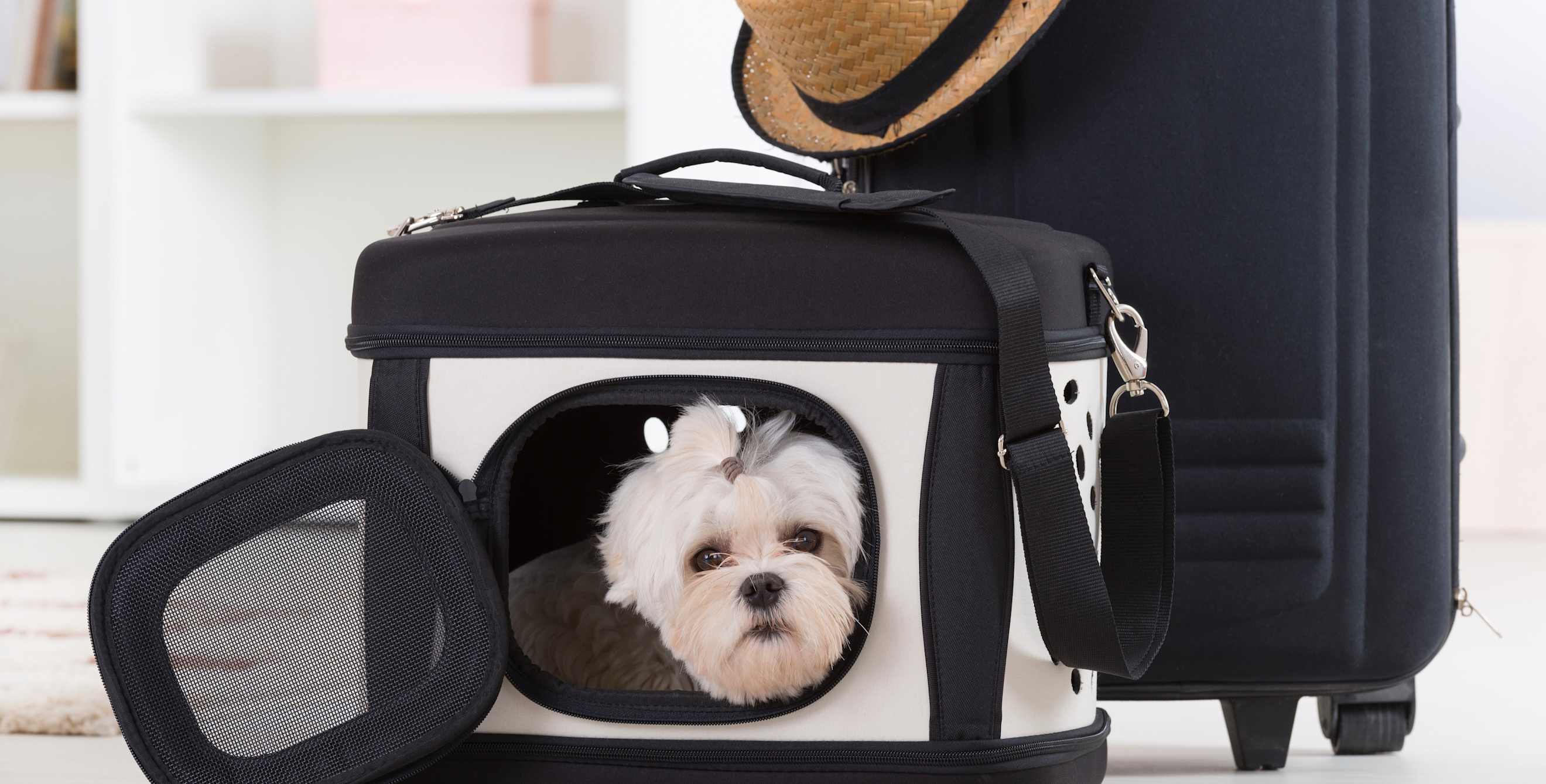
How to Fly With Pets
Here's everything you need to know about how to fly with a pet.

For many people, pets are family, and increasingly, we want to take them with us on vacation. If your plans involve taking your pet on a plane, extra precautions will ensure your furry friend arrives at your destination safely. Before you book any travel (and your pet’s too—they will need reservations) take these essential steps.
Crate train your critter.
Your pet must be crated for the duration of the flight. If you haven’t crate trained your critter, start now and use your travel carrier as part of the process. (Yes, you can crate train cats and rabbits, too.) A pet that feels comfortable and safe in her crate will have an easier trip. A light meal pre-flight helps, too, so your animal is less likely to poop or pee.
Review your airlines’ pet policy.
Some airlines limit the number of pets per flight and the type of animal allowed—even the breed. Commonly, cats, dogs, rabbits, and household birds are the only acceptable animals. This means your guinea pig or chinchilla is not boarding the plane, no matter how well behaved she is. Pet policies also include size restrictions. Larger animals will have to travel in secure crates in the hold. Smaller critters can go in the cabin, but only if they fit under the seat in front of you. Some carriers fly in-cabin pets only, and some won’t fly pets at all. Read the guidelines thoroughly before booking any travel to save expense and anxiety. Pet guidelines online are very reliable, but if you have any questions, call the airlines. Different airlines have different policies, so check with each carrier in your itinerary.
Plan ahead for international destinations and Hawaii.
Review the pet policies at your destination. Hawaii has quarantine laws and requires extensive documentation. If you’re taking your pet overseas, check the vaccinations and documentation requirements for that country; it may be as simple as using the red lane, declaring your pet, and presenting the required documentation. The department of health or agriculture for your destination is a good place to find these requirements.
Contact your vet.
Considering medicating your pet? Not so fast. Your vet can help you find the best calming solution for your critter. Don’t medicate a pet that’s traveling in the hold, as side effects can interfere with heart rate, blood pressure, and temperature regulation. Anxiety medications such as Rescue Remedy and dog and cat pheromone products may be a better choice, as they have fewer side effects. If you have any concerns—known health issues, anxiety, or anything else—make an appointment well before you travel. It will also give you a chance to make sure vaccinations are current and to get copies of all recent records.
Consider these practical tips, too.
You won’t know how your pet does on a plane until your pet is... on a plane! Start with a short trip to see how it goes. Always carry up-to-date health records with you, not in your checked luggage. If you must put your pet in the hold, try to travel when the weather is mild so your pet isn’t exposed to extreme hot or cold during loading times. Some animals are reassured by traveling with a pillowcase or T-shirt that carries their owner’s scent. Before you travel, locate the emergency vet clinic nearest your destination. Give yourself plenty of advance time to plan your pet’s needs specifically, to test medication, and to make sure any vaccinations are effective. If you’re not stressed, it’s less likely your pet will be, and you’ll both have a much better trip.
AAA Members enjoy special benefits and discounts when booking flights through AAA Travel.